DOT Medical Certification Under The New Requirements

Long distances at high speeds, hauling literally tons of heavy loads. As a truck driver, you’re seen as one of the biggest threats on the road.
In fact, the safety of our highways largely depends on your health and safety. So, a safety valve was created to make sure you’re healthy enough to safely operate a commercial vehicle: passing regular medical exams to keep your CDL current.
What started off as a good thing, however, slowly eroded into lax standards and greater safety risks for drivers—and others who traveled on the roads with them.
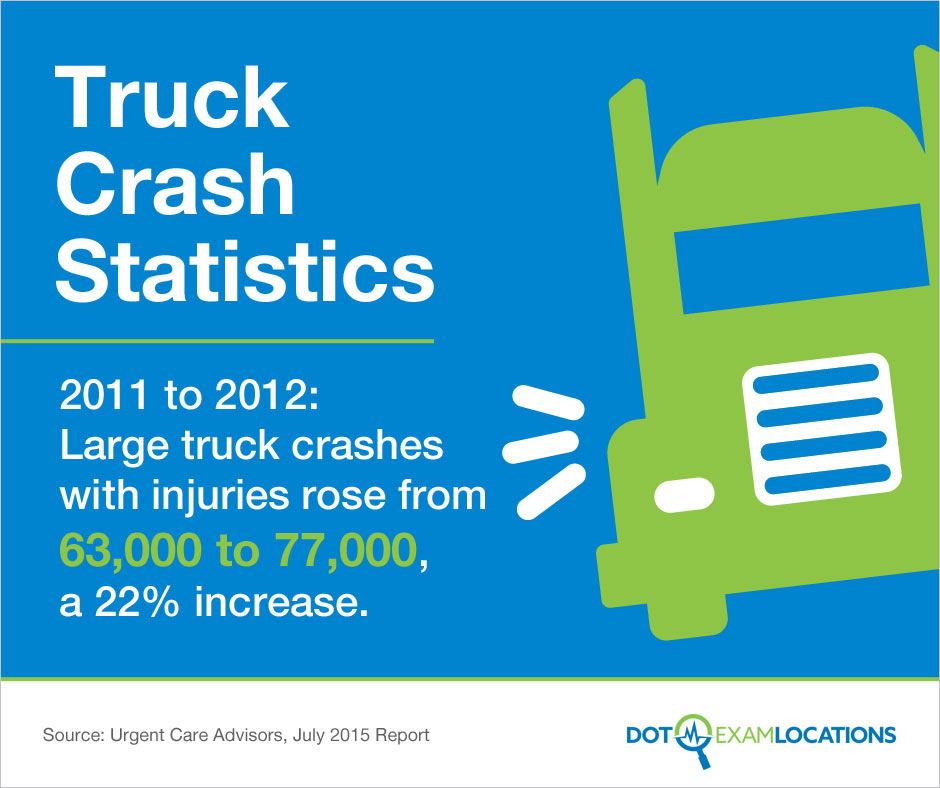
Truck Crash Statistics
2011 to 2012: Large truck crashes with injuries rose from 63,000 to 77,000, a 22% increase.
Source: Urgent Care Advisors, July 2015 Report
Here’s what you need to know to get DOT medical certification under the new requirements.
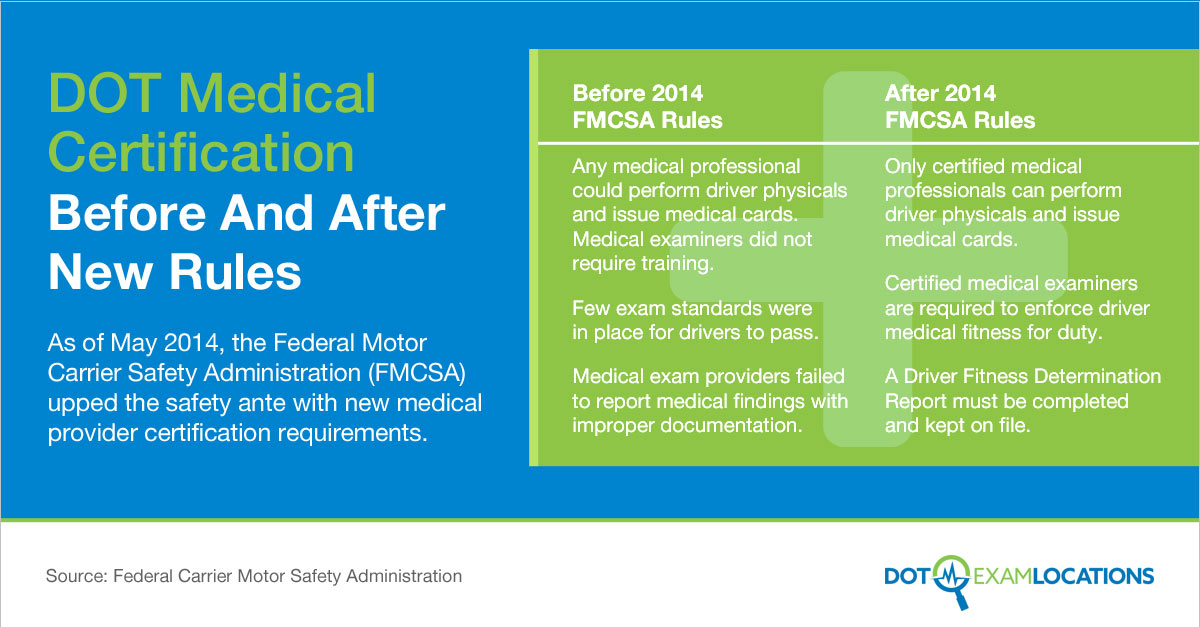
DOT Medical Certification Before And After New Rules
As of May 2014, the Federal Motor Carrier Safety Administration (FMCSA) upped the safety ante with new medical provider certification requirements.
| Before 2014 FMCSA Rules | After 2014 FMCSA Rules |
| Any medical professional could perform driver physicals and issue medical cards. Medical examiners did not require training. | Only certified medical professionals can perform driver physicals and issue medical cards. |
| Few exam standards were in place for drivers to pass. | Certified medical examiners are required to enforce driver medical fitness for duty. |
| Medical exam providers failed to report medical findings with improper documentation. | A Driver Fitness Determination Report must be completed and kept on file. |
Source: Federal Carrier Motor Safety Administration
What’s At Stake?
Before the new 2014 certification requirements, nearly 440,000 medical providers—ranging from medical doctors to physician assistants—could issue medical cards for drivers.
That pool of providers has dropped significantly since the new Federal Motor Carrier Safety Administration (FMCSA) requirements went into effect, which may hinder some drivers’ ability to get certified in certain areas of the country.
Great Expectations: Number Of Certified Examiners To Drivers
Goal: 40,000 certified examiners for 4.4 million US truck drivers who need annual recertification exams.
Reality:40,000 certified examiners for nearly 6 million US truck drivers who need exams every 9 months due to medical conditions.
Source: Urgent Care Advisors, July 2015 Report
The physical qualification standards for drivers has not changed. However, stricter rules enforced by providers results in fewer drivers passing, which reduces the pool of qualified drivers.
What’s Required?
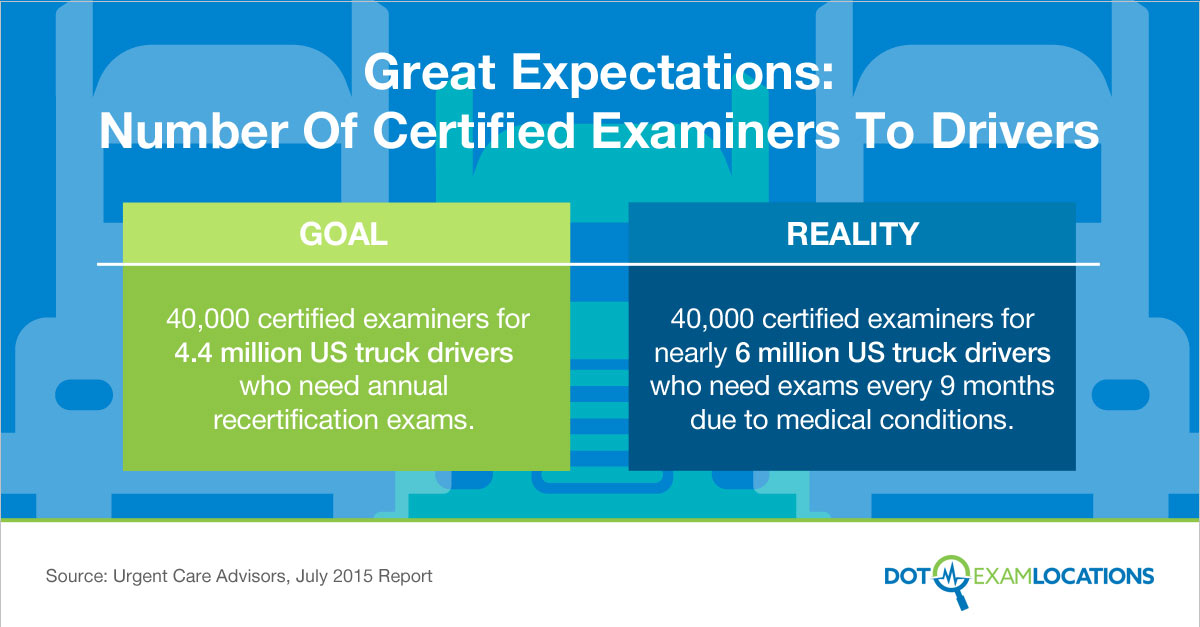
To get certified, medical examiners must take a training course and pass a certification exam. Refresher training is required every five years, and they must retake the exam to maintain certification every 10 years.
They also must keep excellent records.
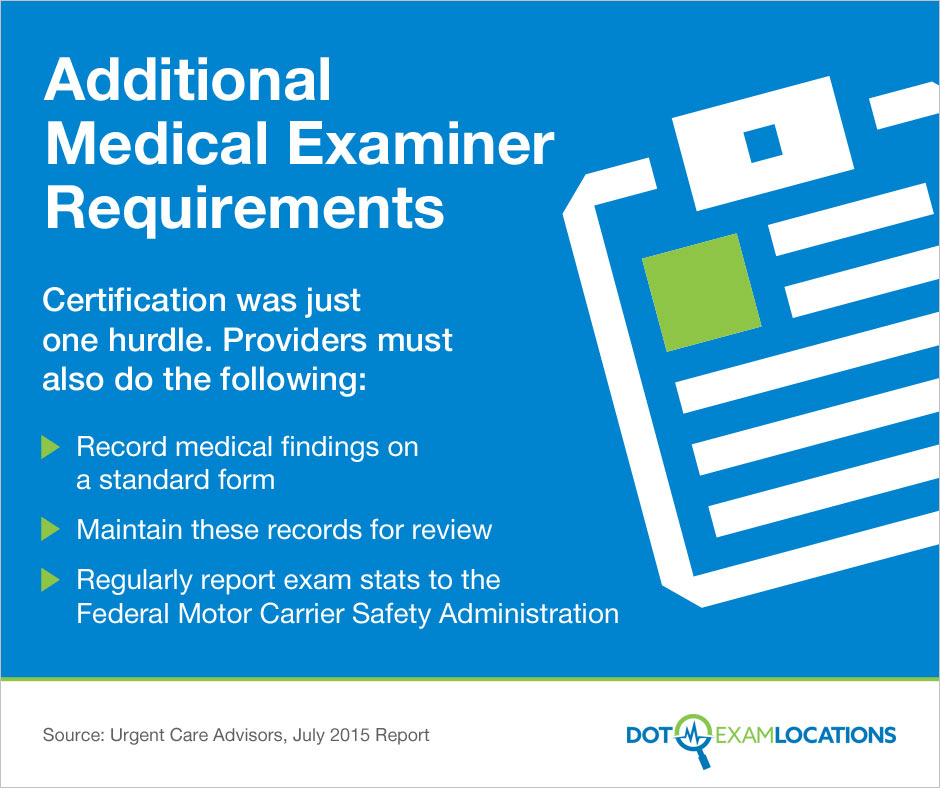
Additional Medical Examiner Requirements
Certification was just one hurdle. Providers must also do the following:
- Record medical findings on a standard form
- Maintain these records for review
- Regularly report exam stats to FMCSA
Source: Urgent Care Advisors, July 2015 Report
Medical examiners now have stricter regulations and more accountability. Those who fail to follow the guidelines are removed from the registry database, which means the provider pool grows even smaller.
Who Can You Go To?
Luckily, a variety of medical examiners can authorize DOT medical certification.
Breakdown Of Certified Providers (as of February 2015)
Medical Doctor: 37.4%
Nurse Practitioner: 18.4%
Physician Assistant: 18.2%
Advanced Practice Nurse: 9.8%
Doctor of Osteopathy: 9.0%
Doctor of Chiropractic: 7.1%
Other*: 0.2%
*Other includes registered nurses, doctors of nurse practice, naturopaths, medical assistants, physical therapists, doctors of physical medicine, and podiatrists.
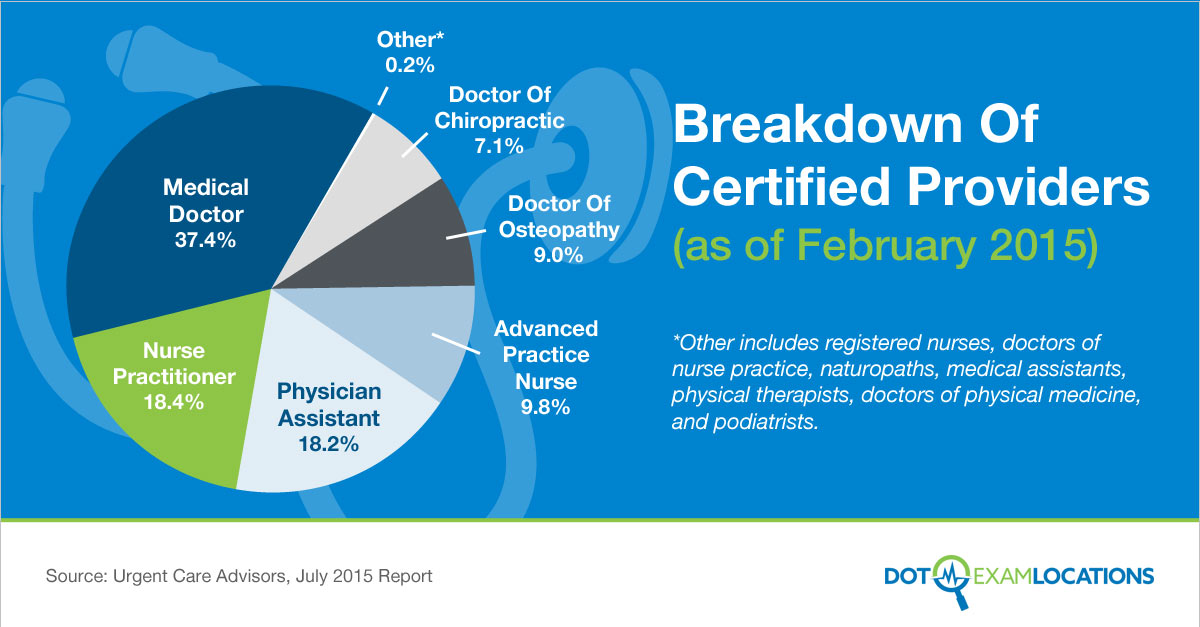
Source: Urgent Care Advisors, July 2015 Report
Any provider certified to conduct medical exams must also be listed on the National Registry of the FMCSA. Drivers in need of DOT medical certification must finder a provider from this database.
What Can You Expect?
In addition to listing providers, the registry does a fairly comprehensive job of offering a variety of medical examiner offices.
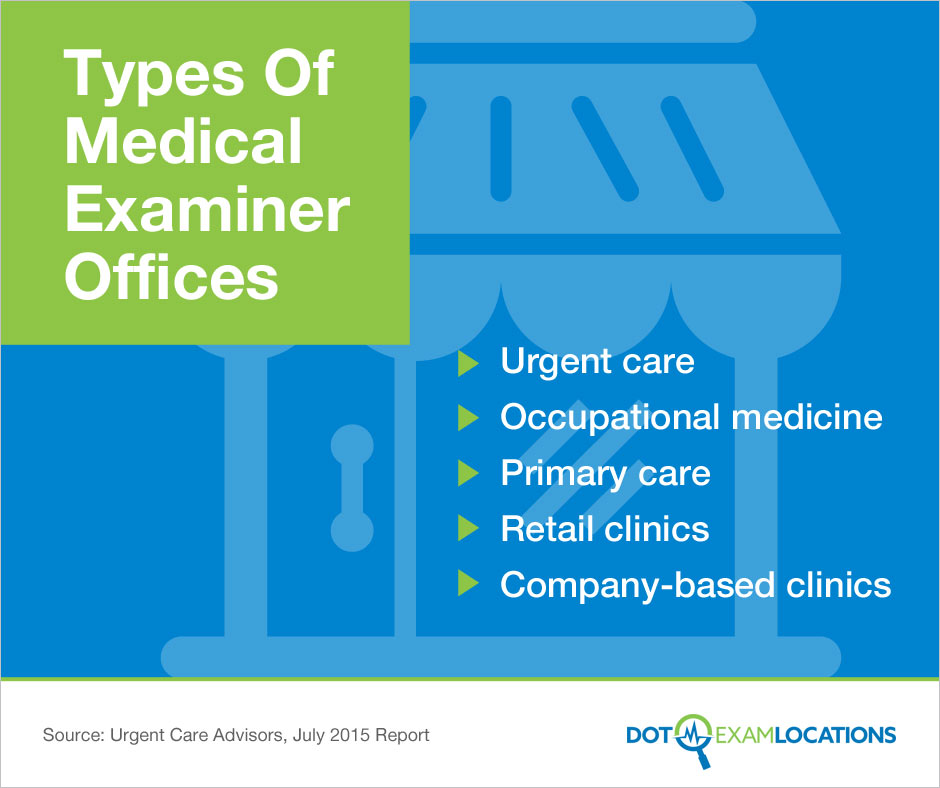
Types Of Medical Examiner Offices
- Urgent care
- Occupational medicine
- Primary care
- Retail clinics
- Company-based clinics
Source: Urgent Care Advisors, July 2015 Report
But what you’ll pay for an exam may vary based on where you live. Pricing is literally all over the map. You could pay as little as $35 and as high as $250, according to a July 2015 report from Urgent Care Advisors.
For the lowest cost with best access, your best bet is in metropolitan areas where providers like Concentra, Minute Clinic (Walgreens), and US Healthworks are largely available.
CALL TO ACTION: Visit DOTEXAMlocations to find a DOT medical certification exam location nearyou.